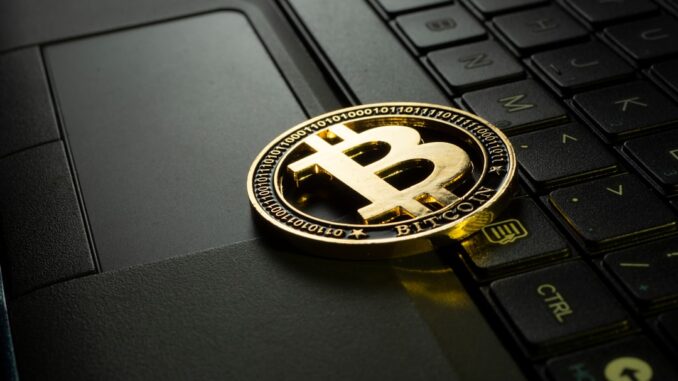
Summary
This article provides a comprehensive guide to cryptocurrency mining pools, discussing their benefits, key factors to consider when choosing a pool, and steps to join one. It also explores different reward systems and the importance of hashrate. By following these steps, you can optimize your mining profitability and contribute to the security of the blockchain network.
Investor Identification, Introduction, and negotiation.
** Main Story**
So, you’re thinking about jumping into the world of cryptocurrency mining? Smart move. But let’s be real, solo mining these days is like trying to win the lottery. That’s where mining pools come in; it’s a team sport, combining everyone’s computing power to boost your chances of actually earning some crypto. Let’s break down how to get started and make the most of it.
Step 1: Pick Your Crypto
First things first, decide which cryptocurrency you want to mine. Bitcoin, Litecoin, Dogecoin, Monero, and Kaspa are some of the heavy hitters, all based on Proof-of-Work. But before you blindly pick one, do your homework. I mean, what’s the point of mining if it isn’t profitable?
Think about the coin’s potential, the current market price, and how difficult it is to mine (the ‘mining difficulty’). You’ll want to check out the network hashrate as well, as a higher network hash rate means you’ll get less coins from mining. You can’t just jump in without a plan, you know? It’s like buying a house without checking the neighborhood.
Step 2: Gear Up – Hardware Selection
Alright, you’ve got your crypto of choice. Now, time for the hardware. For Bitcoin, ASICs (Application-Specific Integrated Circuits) are basically the only way to go. GPUs just won’t cut it anymore. But for other coins, GPU mining might still be viable.
Do your research! Find the best ASIC miner for your chosen coin, and don’t just look at the price tag. Hash rate and power consumption are crucial. Trust me, you don’t want a super-fast miner that also triples your electricity bill. I remember when I first started, I almost made that mistake, luckily I spotted the power consumption requirements before clicking that confirm order button!
Step 3: Pool Party – Evaluating Mining Pools
Okay, time to find a pool. Not a swimming pool, but a mining pool. Research is key, you need to find a pool that meshes with your goals. So, what should you look for?
- Size Matters (But Isn’t Everything): Bigger pools mean more consistent rewards. But, and this is a big but, the payouts are smaller because they’re split between more people. Smaller pools could offer bigger payouts, but they’re less consistent. It’s a risk-reward thing, isn’t it?
- Fees, Fees, Fees: Watch those fees! They can eat into your profits. Most pools charge somewhere between 1% and 3%. And that does add up, you know.
- Payout Methods – PPS, FPPS, PPLNS, oh my! Understand the different reward systems. FPPS (Full Pay-Per-Share) is pretty common; it pays you for your hashrate contributions, and includes block rewards and transaction fees. Which, of course, is what you want.
- Reputation is Everything: What’s the pool’s history? Check forums, read reviews. You want a pool that’s reliable, with good uptime and solid security. I mean, who wants to mine for a pool that’s constantly crashing? Not me, that’s for sure.
- Location, Location, Location: Server location matters too. Pick a pool with servers close to you to minimize latency and boost your mining efficiency. Its no good picking a server on the other side of the planet, is it?
- Security First: Does the pool have two-factor authentication? Are their operations transparent? Security should be a top priority, not an after thought.
Step 4: Joining the Club
Found a pool you like? Awesome! Create an account on their website. You’ll need to configure your mining hardware to connect to the pool’s server. They’ll give you the pool address and your mining credentials.
Step 5: Software Setup
Most mining pools provide detailed instructions for setting up different mining software options. Download the software they recommend and configure it using the pool’s settings and your account details. Then, fire it up and start mining! Nothing to it!
Step 6: Keep an Eye on Things
You’re mining now, but don’t just set it and forget it. Keep an eye on your mining performance through the pool’s dashboard. Track your hash rate, earnings, and payout history. This will help you spot problems and find ways to improve your efficiency. You should be monitoring the pools performance as well. In order to maintain profitability, you need to keep up to date on both the pool’s performance as well as the network difficulty.
Cracking the Code: Hashrate and Rewards
The mining pool’s hashrate is its total computing power. More power means better chances of solving blocks and getting rewards. Your share of those rewards? Well, that’s directly tied to how much hashrate you contribute. Keep an eye on the network hashrate, too. Fluctuations there affect mining difficulty and, yep, you guessed it, your profitability. Understanding these metrics is vital to knowing whether your mining is going well.
Pool mining, while a little centralized, is crucial for network security. It prevents one single entity from controlling the whole blockchain. And, importantly, it makes mining accessible to more people. Even a small miner can participate and contribute. Sounds good, right?
So, there you have it. Follow these steps, understand the nuances, and you’ll be well on your way to managing your mining operations like a pro. You’ll maximize your profits, and you’ll contribute to the stability and security of the whole blockchain thing. Its not rocket science, even if it can feel that way at times.


Be the first to comment